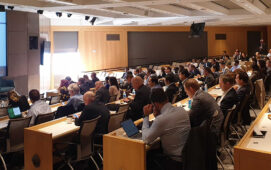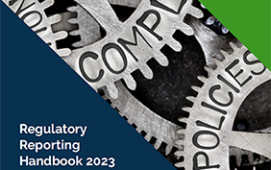
Jan Ahrens believes the majority of environmental sustainability investment theses are wrong.
The problem, says the carbon markets economist, is that most strategies are built to reward companies that are environmentally clean and not also those that are striving to be clean.
“It misses the mark of decarbonisation, because if we make it easy for companies to borrow money and to invest in them if they are already clean, well what about the dirty companies that have to do the heavy lifting?” he asks. “Those are having a harder time finding money and financing to decarbonise.
“That feels wrong to me. You need to invest to make it easy for companies that are currently dirty but want to get clean – this is what we need to finance.”
His response has been to help launch a series of data tools that offer views into companies’ decarbonisation risks through the prism of European and US compliance carbon markets. Ahrens is chief executive of SparkChange, a London-based data and analytics start-up that predicts companies’ exposure to higher carbon allowance charges by crunching the numbers on their sustainability efforts.
Bremen, Germany-based Ahrens argues that the beauty of carbon markets is that they provide an effective translation of companies’ environmental policies and are therefore a better financial metric than most other ESG gauges, which he says are backward-looking.
“The historical carbon footprint of a company is not what matters,” he tells ESG Insight. “What matters is forward-looking financial metrics that tell you which company will do well in a high carbon price world financially.”
Investing in companies that already have a good emissions profile means only companies like Google, Apple and other tech and pharmaceutical giants attract investment.
“They’re not better than anyone else – they’re just the sector that is green by default,” he says. “Meanwhile, all the emissions are actually coming from steel, cement oil and gas utilities but they are outright dismissed because they’re dirty.”
Financing Change
Carbon markets have become a focus of institutional money as the amount of money put into them has climbed. MSCI last year estimated that US$270 billion was invested in compliance carbon markets – those that trade allowances issued by regulators, rather than voluntary carbon markets. The theory behind the cap-and-trade markets is that companies will have to pay more for their pollution as the price of carbon climbs, providing an incentive to accelerate their decarbonisation programmes.
The European Union’s carbon market, or Emissions Trading System (EU ETS), was the first, and remains the largest, such market. It was established in 2005 to bring private finance into the bloc’s climate action policy. The EU ETS currently puts a price of about €91 (US$99) on a tonne of carbon dioxide. That’s safely within the $50-$100 range that World Bank supported Carbon Pricing Leadership Coalition says the price needs to be by 2030 to ensure global temperatures remain less than 2 degrees above pre-industrial levels, the lowest barrier set by the Paris agreement on climate change.
Nevertheless, not all markets around the world put the same price on carbon and only 4 per cent of global emissions are covered by a price within that range. Even the EU ETS only covers 40 per cent of Europe’s greenhouse gas emissions.
Data Solution
SparkChange’s CarbonAlpha tool, which offers investors and companies assessments of corporate carbon price exposures, is complemented by CarbonImpact, which enables investors to calculate how they can meet impact goals through the allocation of carbon allowances in their portfolios. The company has also created an exchange-traded commodity (ETC) based on European Emission Allowances (EUAs).
SparkChange was formed in 2018 by chairman Dan Barry, a former founder and global head of energy giant BP’s environmental markets division, and chief marketing officer Joff Hamilton-Dick, who had helped found a number of other data platform companies.
The SparkChange platforms collate 700 data points on around 6,500 stocks that trade within carbon markets. Analytics are fed by third-party data from leading global providers as well as from boutique carbon analytic companies. Those are combined with information gleaned from SparkChange’s own decarbonisation pathways analyses.
“It’s important for us to go into the granularity of the data,” Ahrens said. “Where do companies plan to decarbonise, when does the country decarbonise and how do they plan to decarbonise? And how do companies prepare for a high carbon price world?
“We provide really detailed decarbonisation pathways on a company-by-company basis.”
Hedging Tool
As well as helping investors meet their environmental goals and identify investable assets based on their impact targets, the company anticipates its data tools will be used by corporates to hedge against carbon price volatility.
While the hedging use-case has already meant that some polluting companies have managed to avoid huge costs during price changes in carbon markets, it does at least show that those businesses have been “doing their homework” and have a good view of their environmental impact, said Ahrens.
“This is a financial metric with a green touch – it’s not it’s not just a green metric,” he says. But, he adds, “it’s a metric that is looking at the financial impact of carbon pricing on corporates. We can identify companies that are potentially really emissions intensive, really dirty, but will outperform their peers in the next five years.”
Subscribe to our newsletter




